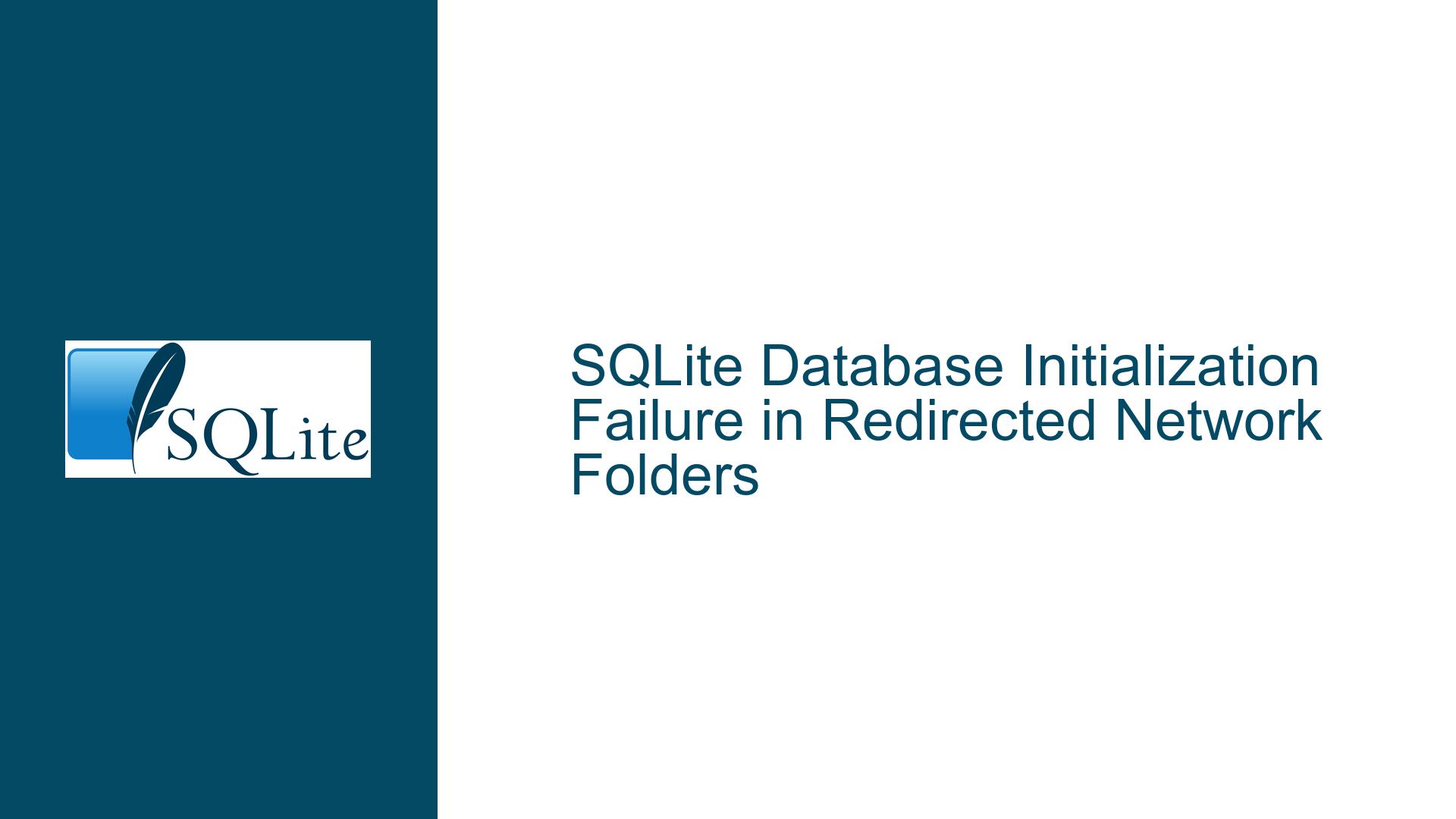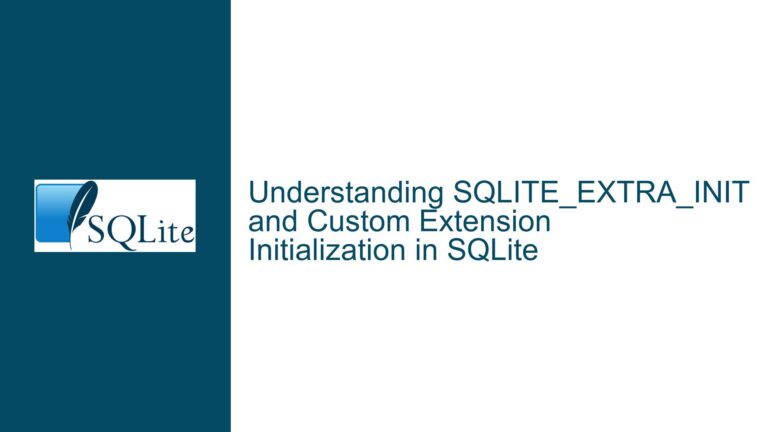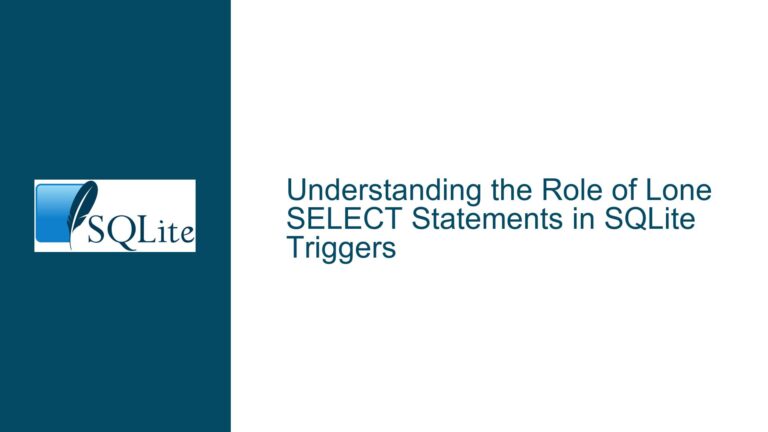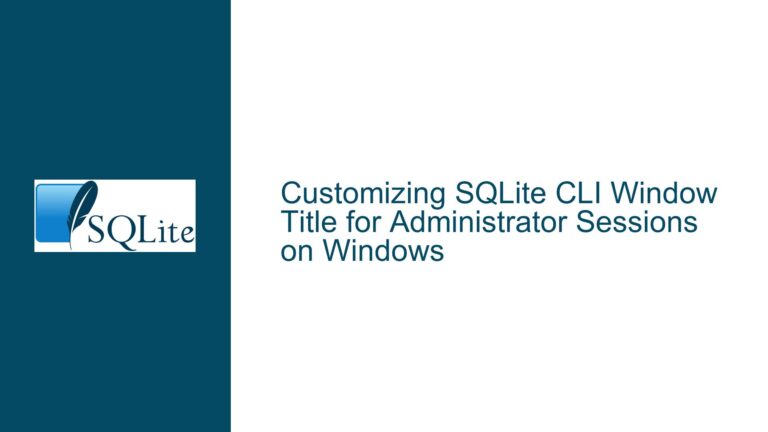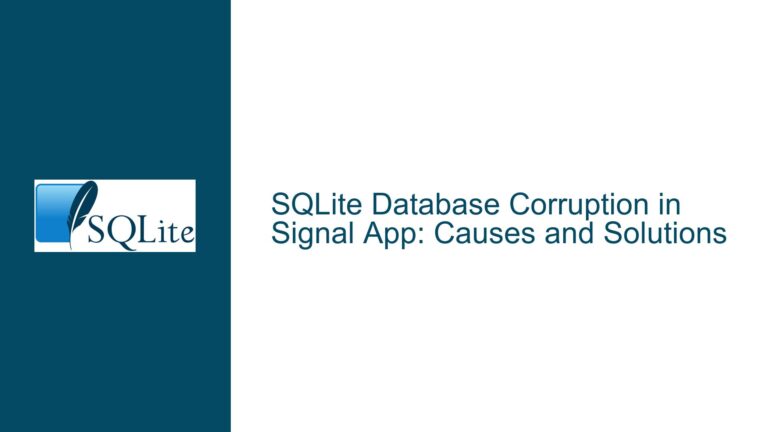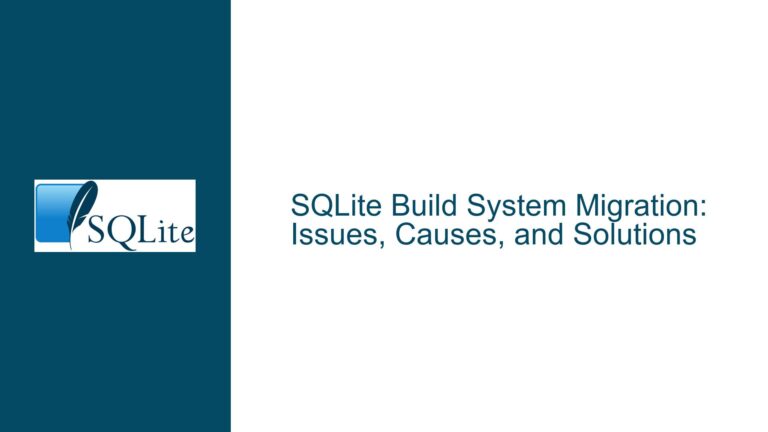SQLite Database Initialization Failure in Redirected Network Folders
Issue Overview: SQLite Database Initialization Fails in Redirected Network Folders
When attempting to initialize or open an SQLite database in a redirected folder on a network share, users encounter an exception: "An exception occurred while initializing the database. See the InnerException for details." The inner exception reveals: "The underlying provider failed on Open. Unable to open database file." This issue arises specifically when the %appdata% folder is redirected to a network location, such as \\server_name\test. Despite the correct path being provided in the code, the application erroneously attempts to create or access the database file at a local path like C:\server_name\test, which does not exist. This behavior persists even when the parseViaFramework property is set to true in the SQLiteConnection configuration.
The problem is reproducible when using the System.Data.SQLite.dll library in conjunction with the .NET framework. Interestingly, the issue does not occur when the redirected folder points to a local directory, nor does it manifest when creating or accessing other types of files (e.g., .log or .xml files) in the same network location. This suggests that the issue is specific to SQLite database file operations in a network-redirected folder context.
The problem has been observed in real-world scenarios where clients use folder redirection via Group Policy Objects (GPO) in Windows environments. While some clients have resolved the issue by modifying GPO configurations or running the application with administrative privileges, these solutions are not universally applicable or acceptable, particularly in environments where end users lack administrative rights.
Possible Causes: Network Path Resolution and Framework-Level Issues
The root cause of this issue appears to lie in how the System.Data.SQLite.dll library resolves network paths when interacting with SQLite databases. The library’s inability to correctly interpret and handle UNC (Universal Naming Convention) paths in a redirected folder scenario suggests a potential flaw in its path resolution logic. This is further evidenced by the fact that the library attempts to create the database file at a local path (C:\server_name\test) instead of the intended network path (\\server_name\test).
Another contributing factor could be the interaction between the System.Data.SQLite.dll library and the underlying .NET framework, particularly when folder redirection is involved. The parseViaFramework property, which is designed to delegate path parsing to the .NET framework, does not resolve the issue, indicating that the problem may extend beyond the library itself. This raises the possibility of a framework-level limitation or bug that affects how network paths are handled in redirected folder scenarios.
Additionally, the involvement of Entity Framework (EF) in the initialization process introduces another layer of complexity. The exception is thrown when calling Database.Initialize(true), a method defined in System.Data.Entity. This suggests that the issue may be exacerbated or influenced by EF’s database initialization logic, particularly when working with SQLite databases in network-redirected folders. The interplay between EF, System.Data.SQLite.dll, and the .NET framework’s path resolution mechanisms could be contributing to the observed behavior.
Troubleshooting Steps, Solutions & Fixes: Addressing Path Resolution and Framework Compatibility
To resolve the issue of SQLite database initialization failure in redirected network folders, a multi-faceted approach is required. This involves addressing potential path resolution issues, ensuring compatibility with the .NET framework, and exploring alternative configurations or workarounds.
Step 1: Verify Network Path Accessibility and Permissions
Before delving into code-level solutions, it is essential to confirm that the network path is accessible and that the application has the necessary permissions to read and write to the specified location. This can be done by attempting to create and access non-database files (e.g., .txt or .log files) in the same network folder using the same application. If these operations succeed, it confirms that the network path is valid and that the application has the required permissions. If not, the issue may be related to network configuration or permissions, which should be addressed at the system or network administration level.
Step 2: Explicitly Set the Database Path Using UNC Format
Ensure that the database path is explicitly set using the UNC format (e.g., \\server_name\test\config.db) and avoid relying on environment variables or special folder paths (e.g., %appdata%) that may be subject to redirection. Hardcoding the UNC path in the code temporarily can help isolate the issue and determine whether the problem lies in path resolution or elsewhere. If the database initialization succeeds with a hardcoded UNC path, the issue is likely related to how the application constructs or resolves the path dynamically.
Step 3: Use Path.GetFullPath to Resolve Redirected Paths
When working with redirected folders, use the Path.GetFullPath method to resolve the full path of the database file before passing it to the SQLiteConnection constructor. This ensures that the application is working with the correct, fully resolved path, regardless of folder redirection. For example:
string sQLiteDBPath = Path.GetFullPath(Path.Combine(Environment.GetFolderPath(Environment.SpecialFolder.ApplicationData), "test1", "test2", "config.db"));
SQLiteConnection connection = new SQLiteConnection($"Data Source={sQLiteDBPath};");
This approach can help mitigate issues arising from path resolution inconsistencies in redirected folder scenarios.
Step 4: Ensure Compatibility with the .NET Framework
Given the potential framework-level issues, ensure that the application is targeting a compatible version of the .NET framework. Some versions of the framework may handle network paths and folder redirection differently, leading to unexpected behavior. Additionally, consider updating the System.Data.SQLite.dll library to the latest version, as newer releases may include bug fixes or improvements related to network path handling.
Step 5: Explore Alternative Database Initialization Strategies
If the issue persists, consider alternative strategies for initializing the SQLite database. One approach is to initialize the database locally and then move it to the network location after creation. This workaround involves creating the database file in a local temporary directory, performing the necessary initialization, and then copying the file to the intended network location. While this approach adds complexity, it can help bypass issues related to direct database initialization in network-redirected folders.
Step 6: Investigate Entity Framework Configuration
Since the exception is thrown during the Database.Initialize(true) call, investigate the Entity Framework configuration to ensure compatibility with SQLite and network paths. Review the EF initialization code and consider using a custom database initializer if necessary. Additionally, verify that the EF configuration does not introduce any path resolution inconsistencies or conflicts with the System.Data.SQLite.dll library.
Step 7: Consult Documentation and Community Resources
Finally, consult the official documentation and community resources for System.Data.SQLite.dll, Entity Framework, and the .NET framework for any known issues or best practices related to network path handling and folder redirection. Engaging with the community through forums or support channels can provide additional insights or potential solutions that may not be immediately apparent.
By systematically addressing path resolution, framework compatibility, and initialization strategies, it is possible to resolve the issue of SQLite database initialization failure in redirected network folders. While the problem may require a combination of code-level adjustments and system-level configurations, a thorough and methodical approach can lead to a robust and reliable solution.
